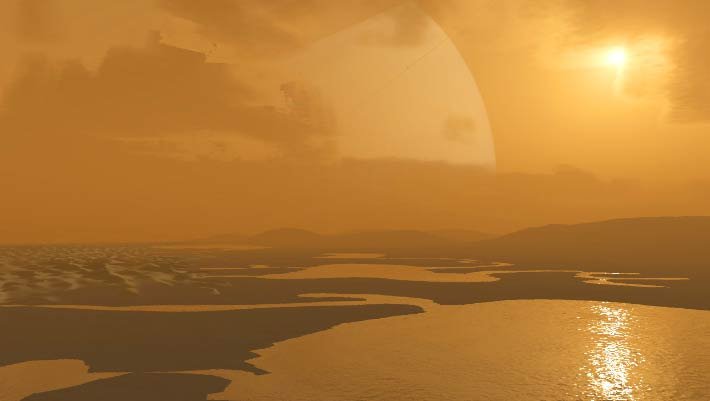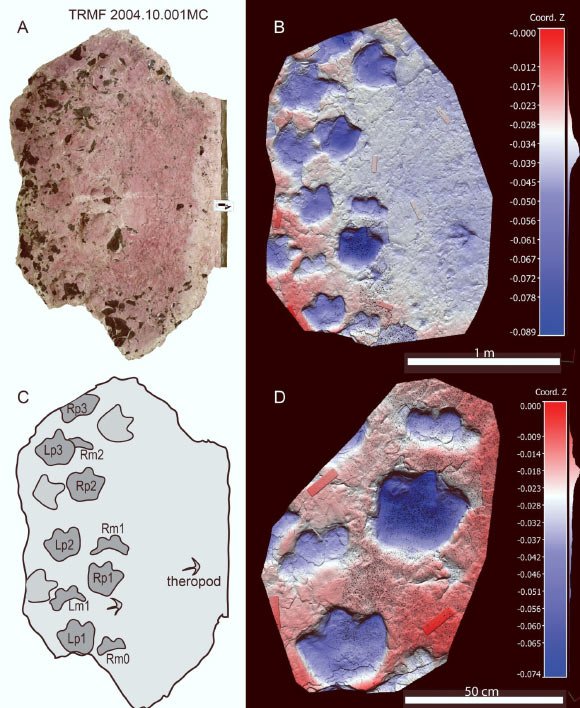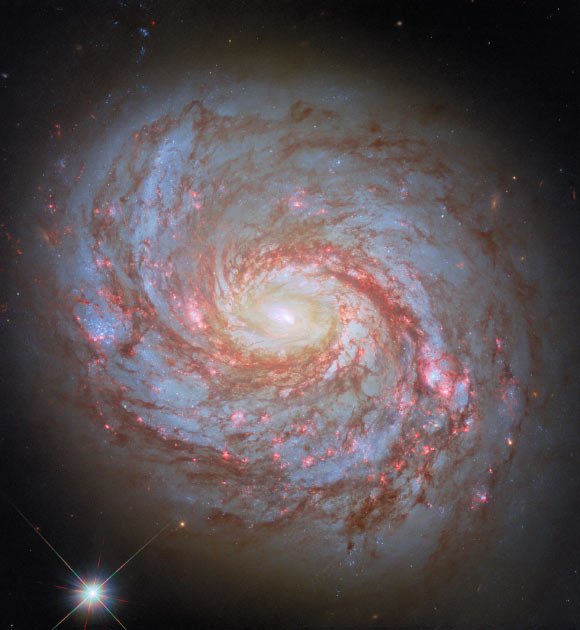A team of biologists from the United States, Canada, the United Kingdom and France has developed a scenario of what life on Titan, Saturn’s largest moon, might look like if it does exist, where it is most likely to occur and how much of it might be present.

An artist’s rendering of the surface of Saturn’s largest moon, Titan. Image credit: Benjamin de Bivort, debivort.org / CC BY-SA 3.0.
“In our study, we focus on what makes Titan unique when compared to other icy moons: its plentiful organic content,” said Dr. Antonin Affholder, a researcher at the University of Arizona.
Using bioenergetic modeling, Dr. Affholder and colleagues found that Titan’s subsurface ocean, estimated to be as deep as about 483 km (300 miles), may support lifeforms that consume organic material.
“While much has been speculated about possible scenarios that could give rise to living organisms on Titan based on the moon’s abundant organic chemistry, previous estimates have suffered from an overly simplistic approach,” Dr. Affholder said.
“There has been this sense that because Titan has such abundant organics, there is no shortage of food sources that could sustain life.”
“We point out that not all of these organic molecules may constitute food sources, the ocean is really big, and there’s limited exchange between the ocean and the surface, where all those organics are, so we argue for a more nuanced approach.”
At the core of the research lies a back-to-basics approach that attempted to come up with a plausible scenario for life on Titan that assumed one of the simplest and most remarkable of all biological metabolic processes: fermentation.
Familiar to Earthlings for its use in sourdough breadmaking, beer brewing and — less desirably — its role in spoiling forgotten leftovers, fermentation only requires organic molecules, but no oxidant such as oxygen, a crucial requirement for other metabolic processes, such as respiration.
“Fermentation probably evolved early in the history of Earth’s life, and does not require us to open any door into unknown or speculative mechanisms that may or may not have happened on Titan,” Dr. Affholder said.
“Life on Earth could have first emerged as feeding on organic molecules left over from Earth’s formation.”
“We asked, could similar microbes exist on Titan? If so, what potential does Titan’s subsurface ocean have for a biosphere feeding off of the seemingly vast inventory of abiotic organic molecules synthesized in Titan’s atmosphere, accumulating at its surface and present in the core?”
The researchers specifically focused on one organic molecule, glycine, the simplest of all known amino acids.
“We know that glycine was relatively abundant in any sort of primordial matter in the Solar System,” Dr. Affholder said.
“When you look at asteroids, comets, the clouds of particles and gas from which stars and planets like our Solar System form, we find glycine or its precursors in pretty much all those places.”
However, computer simulations revealed that only a small fraction of Titan’s organic material may be suitable for microbial consumption.
Glycine-consuming microbes in Titan’s ocean would depend on a steady supply of the amino acid from the surface, through the thick icy shell.
Previous work by the same team had shown that meteorites impacting the ice could leave behind ‘melt pools’ of liquid water, which then sink through the ice and deliver surface materials to the ocean.
“Our new study shows that this supply may only be sufficient to sustain a very small population of microbes weighing a total of only a few kilograms at most — equivalent to the mass of a small dog,” Dr. Affholder said.
“Such a tiny biosphere would average less than one cell per liter of water over Titan’s entire vast ocean.”
For a future mission to Titan, the odds of finding life — if it is indeed there — could be like looking for a needle in a haystack, unless Titan’s potential for life is to be found elsewhere than in its surface organic content.
“We conclude that Titan’s uniquely rich organic inventory may not in fact be available to play the role in the moon’s habitability to the extent one might intuitively think,” Dr. Affholder said.
The paper was published in the Planetary Science Journal.
_____
Antonin Affholder et al. 2025. The Viability of Glycine Fermentation in Titan’s Subsurface Ocean. Planet. Sci. J 6, 86; doi: 10.3847/PSJ/adbc66











